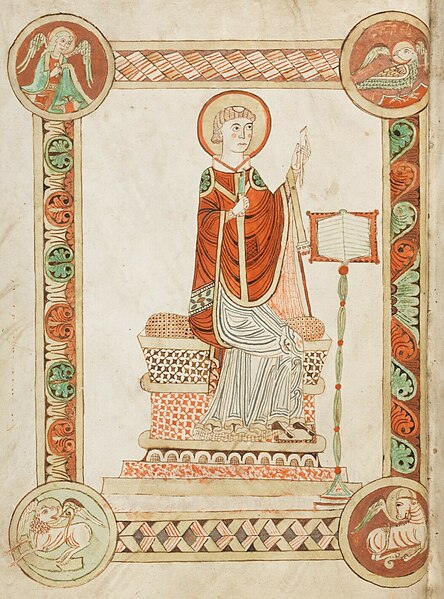William of Malmesbury was the foremost English historian of the 12th century. He has been ranked among the most talented English historians since Bede. Modern historian C. Warren Hollister described him as "a gifted historical scholar and an omnivorous reader, impressively well versed in the literature of classical, patristic, and earlier medieval times as well as in the writings of his own contemporaries. Indeed William may well have been the most learned man in twelfth-century Western Europe."
Stained-glass window showing William, installed in Malmesbury Abbey in 1928 in memory of Rev. Canon C. D. H. McMillan, vicar of Malmesbury from 1907 to 1919
Malmesbury Abbey in Wiltshire, completed in 1180; it remains in use as the parish church of Malmesbury.
Bede, also known as Saint Bede, the Venerable Bede, and Bede the Venerable, was an English monk and an author and scholar. He was one of the greatest teachers and writers during the Early Middle Ages, and his most famous work, Ecclesiastical History of the English People, gained him the title "The Father of English History". He served at the monastery of St Peter and its companion monastery of St Paul in the Kingdom of Northumbria of the Angles.
The Venerable Bede writing. Detail from a 12th century codex
Stained glass at Gloucester Cathedral depicting Bede dictating to a scribe
Bede's tomb in the Galilee Chapel at the west end of Durham Cathedral
The Venerable Bede writing the Ecclesiastical History of the English People, from a 12th-century codex at Engelberg Abbey, Switzerland






